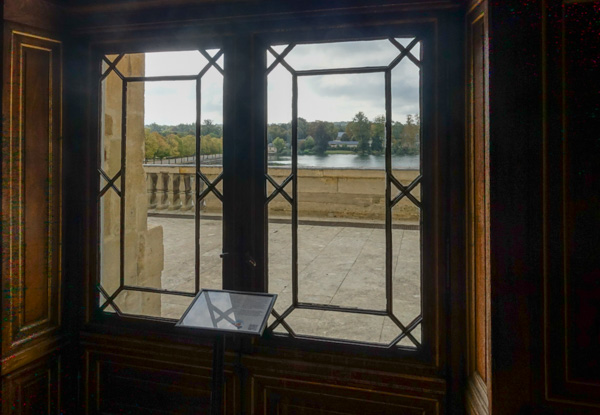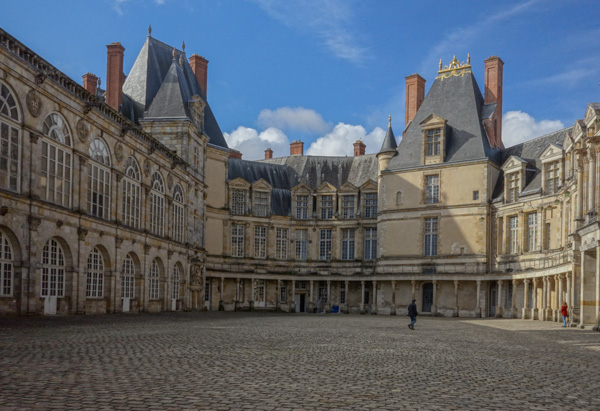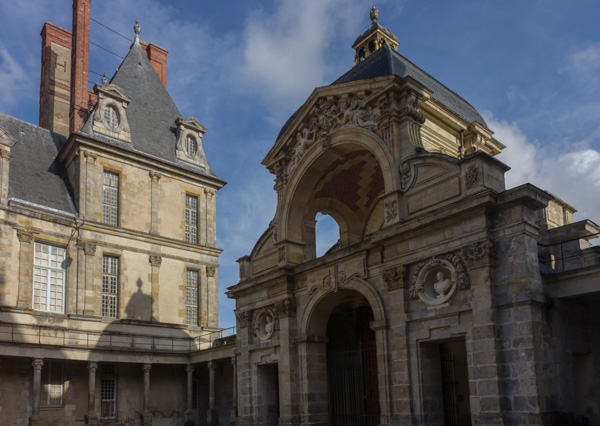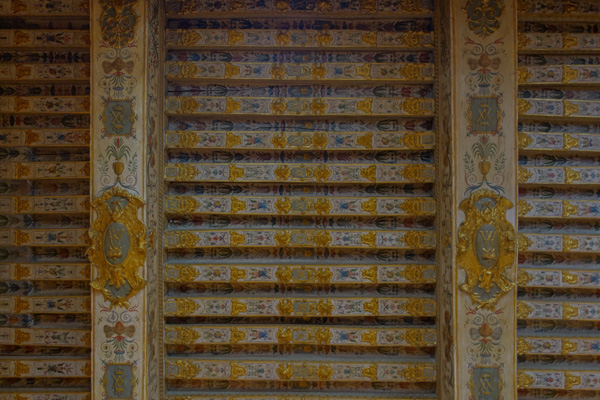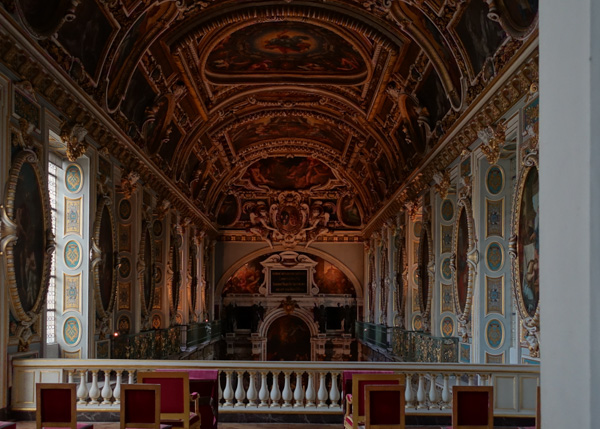Earlier I wrote about walking around Chateau Fontainebleau, one of our favorite walks here (Around Bois-le-Roi – Chateau Fontainebleau). Yesterday we returned to the chateau, not for a walk but to visit the interior. We’ve done this before – as in, three or four times before! – but we have enjoyed every visit and wanted to see it again before we left.
A very short history of the chateau: originally a hunting lodge for the French kings, in the first half of the 1500s, François 1 built probably 90% of what exists today. After François, every king and emperor of France added to – and in some cases, subtracted from – Chateau Fontainebleau. This makes Chateau Fontainebleau a museum of the French monarchy – everywhere you see changes made by successive kings and queens, often identified by those kings’ and queens’ monograms.
We had two pleasant surprises: first, more of the chateau has been restored and open to visitors; and second, the place was deserted. This made the visit much more enjoyable than being there as part of a crowd, even though Chateau Fontainebleau never approaches the crowds of Versailles.
Napoleon
The emperor Napoleon spent quite a bit of time at Chateau Fontainebleau, both with his first wife, Josephine, and his second, Maria-Theresa, so the chateau has collected a fair amount of Napoleon memorabilia and displays it in a small museum. Here are two of my favorite things there.
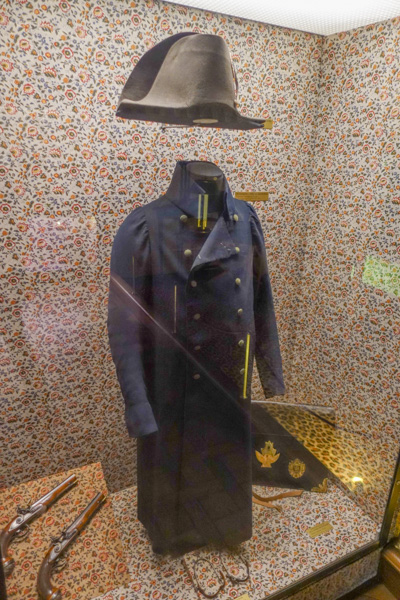
Napoleon’s famous hat and battle coat. He wore these in several battles. What you can’t see from this picture is how short he was: 5′ 6″ at the most.
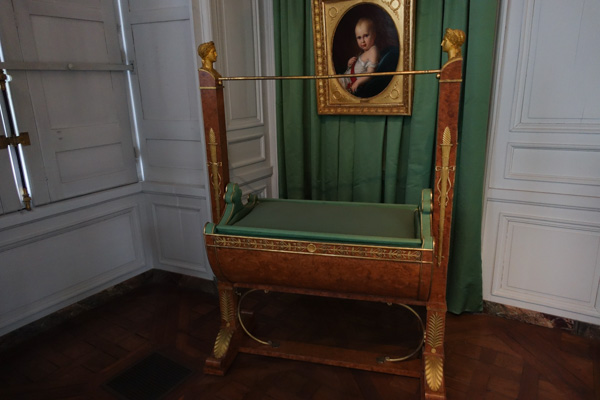
The crib of Napoleon’s only legitimate child, Napoléon François Joseph Charles Bonaparte. When Napoleon abdicated the first time, in 1814, he named this son Napoleon II as his successor. France was having none of that, refused to give him any power, and stripped him of the title after two weeks. He went to Austria where he lived until dying of tuberculosis at age 21.
Crowds
We have been through Chateau Fontainebleau three or four times before, and while it’s never been really crowded (one of its attractions, we think), there have always been a fair number of fellow gawkers. This trip? Not so much.
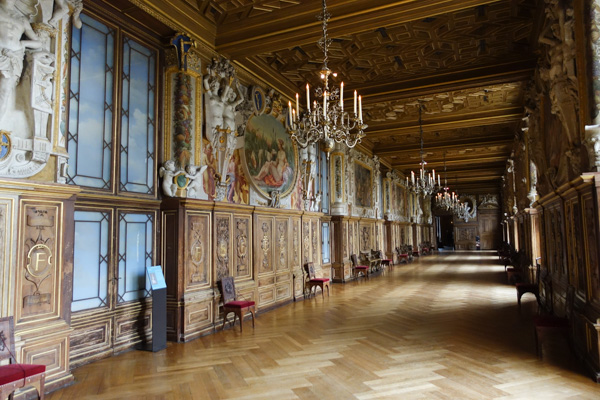
The Gallery Françoise I. He brought the Renaissance to France, and this gallery is his crowning achievement in that respect. Notice the hoards of people.
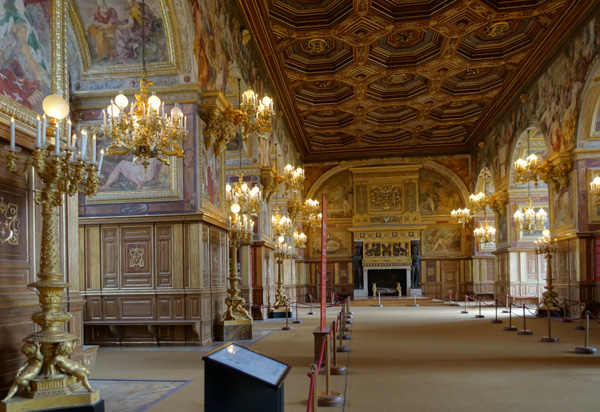
The Ball Room, probably our favorite room in the chateau. Henry IV (ruled 1589-1610) had most of the decoration done during his reign. There are many triple “new moons” (“crescents,” in French, croissants), Henri’s symbol, and intertwined Hs and Ms (the M for Maria d’Medici, his second wife).
Cour Ovale
The Cour Ovale. This space has been the center of the chateau since it was first built, although the buildings forming it now were built mostly in the 1500s. For years I’ve looked out windows and through a gate and wished we could walk in it, but it has always been closed to the public. No longer! Visitors to the chateau can now stroll around the Cour Ovale, and we took full advantage! I love this courtyard and was very happy to be able to spend twenty minutes in it. A lot of historic people entered the chateau through the Cour Ovale.
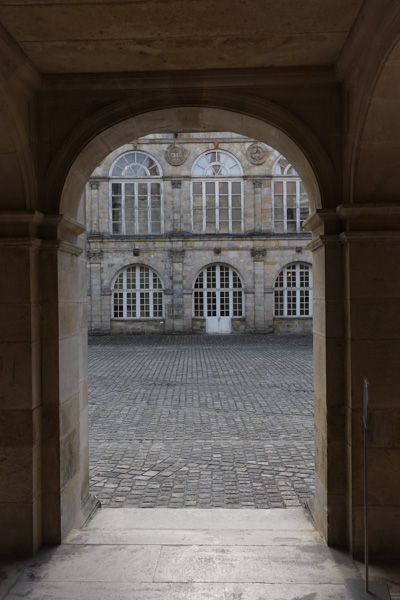
As we (finally) left the Cour Ovale, I told Laurie that now I could die happy, having been there. An exaggeration, of course, but it was very fun to walk around this exceedingly beautiful courtyard that we’d had to look at from the outside for years!
Some Other Pix
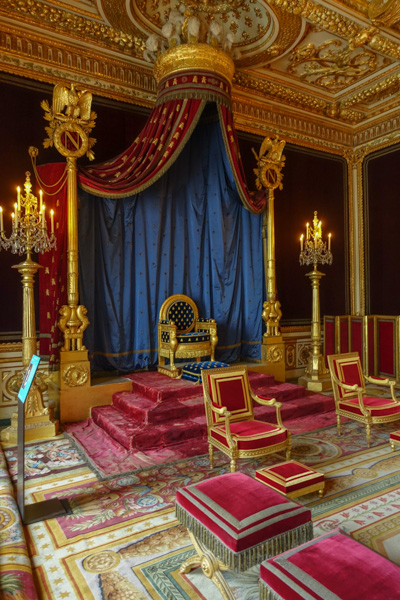
This is the throne Napoleon used when he was at Fontainebleau. Napoleon was an enigmatic figure and I’m not sure anyone will ever be able to say whether he was good or bad for France. But no one can deny that he was a force. I’m fascinated by him and his place in history, but when I asked some French friends what the French think of him 200 years after his death, the response was, “They don’t think of him at all.”
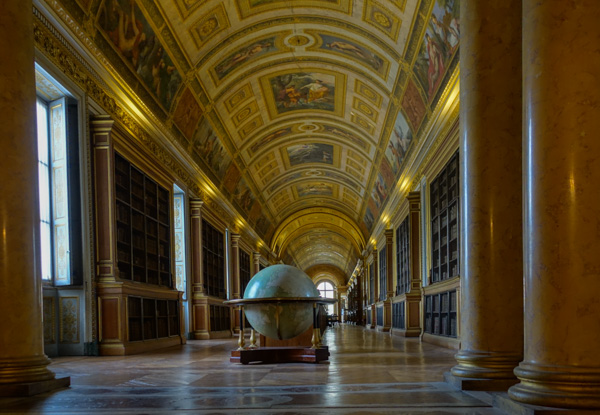
Maybe the most beautiful library in the world, eh? This is the Diana Gallery, built by Henry IV and named after the goddess of the hunt, Diana.
The Trinity Chapel
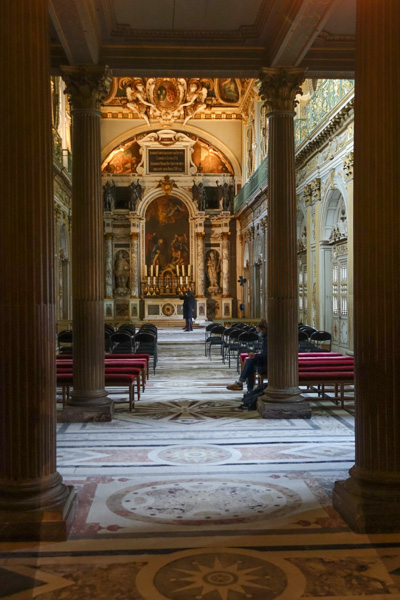
The “hoi-polloi” level. Remember, the folks down here were aristocrats and courtiers of the royal family, but they had to stay in their place, even in the chapel.
Now you’ve seen the outside and inside of Chateau Fontainebleau. Our visit exceeded our expectations; new rooms had been restored and opened, we walked around the Cour Ovale and admired it, we had entire rooms and galleries to ourselves. Honestly, when we return, we’ll be back for our walks in the chateau’s gardens, and we will almost surely pay the admission to walk through the chateau’s rooms again.

